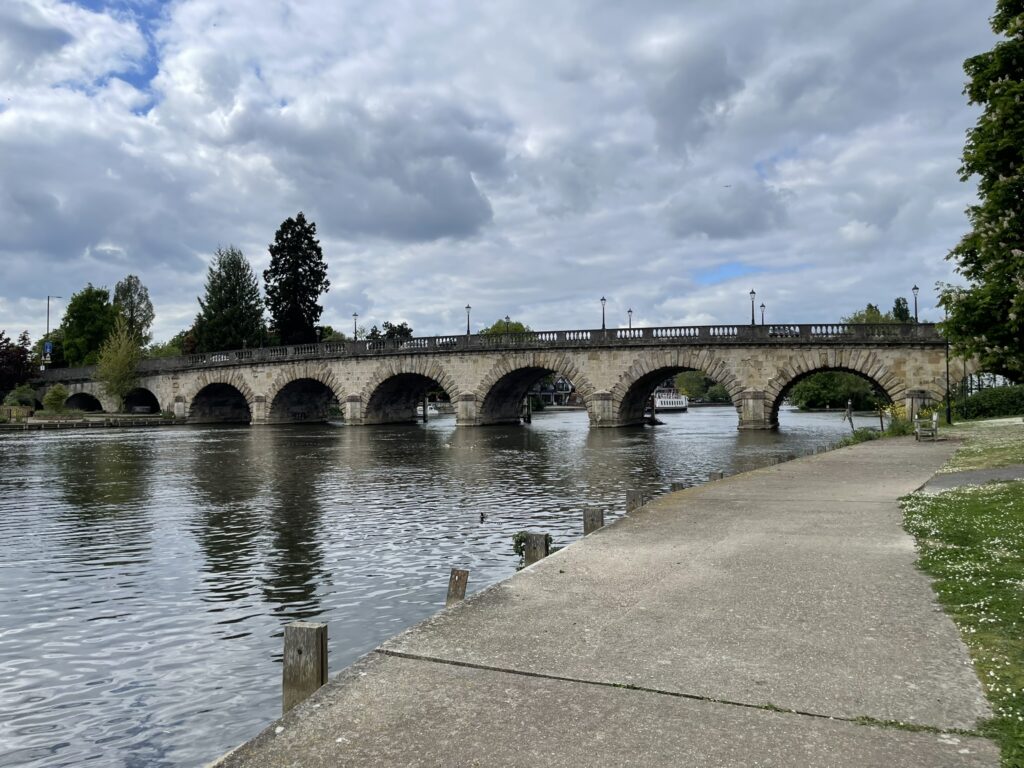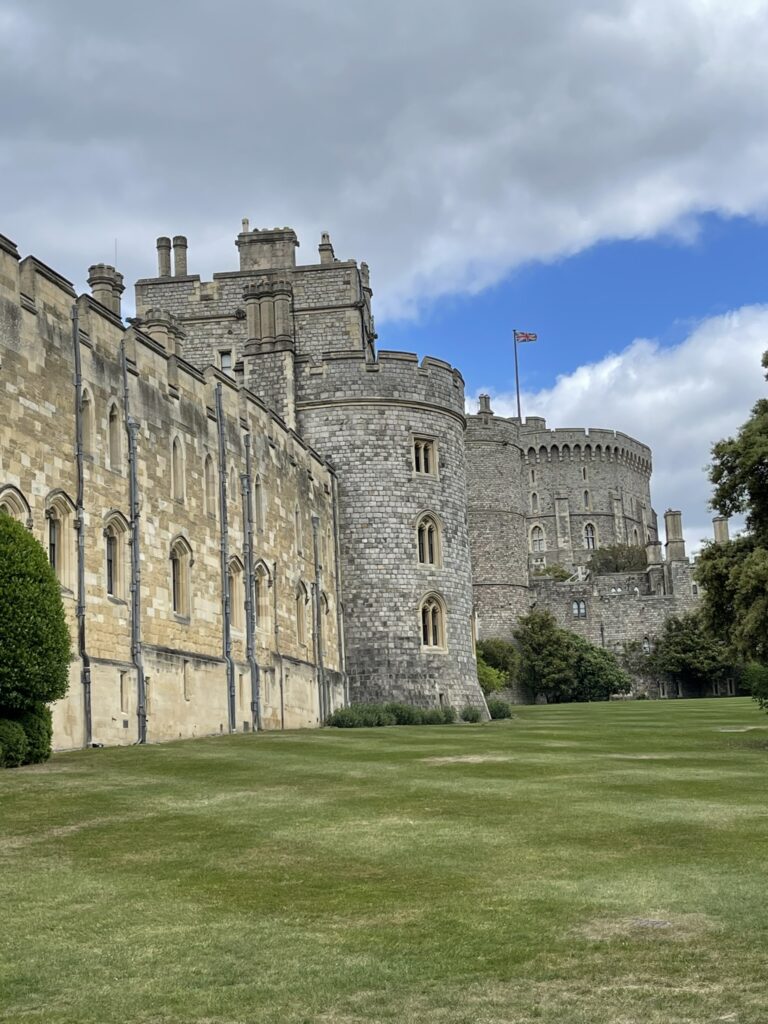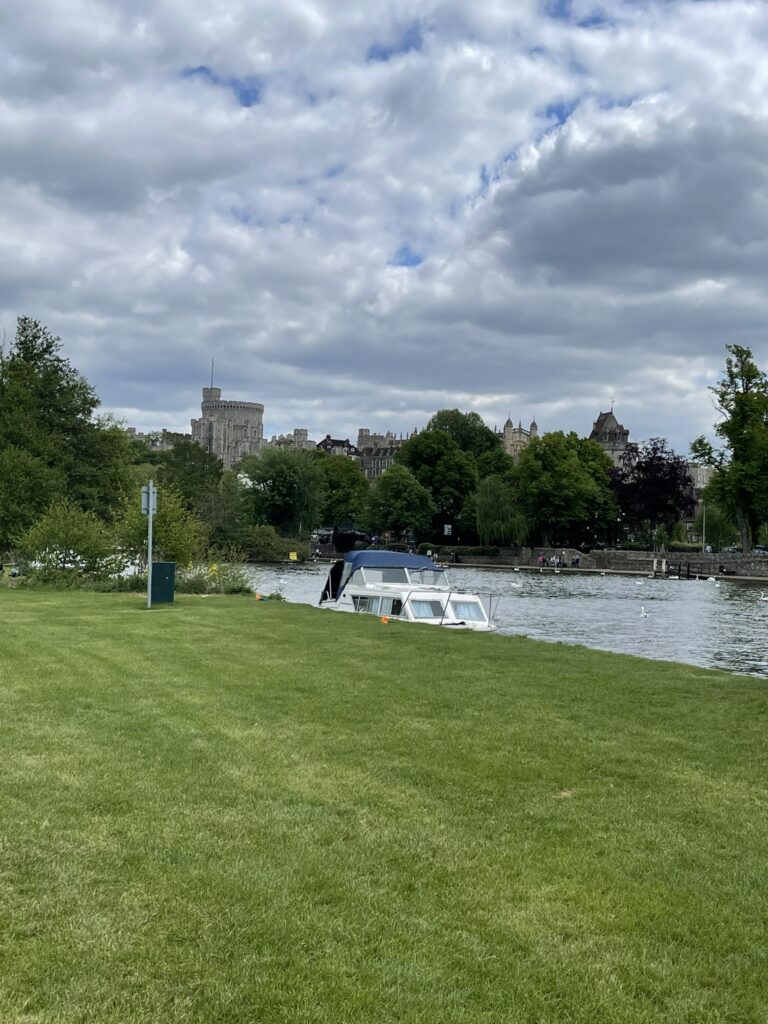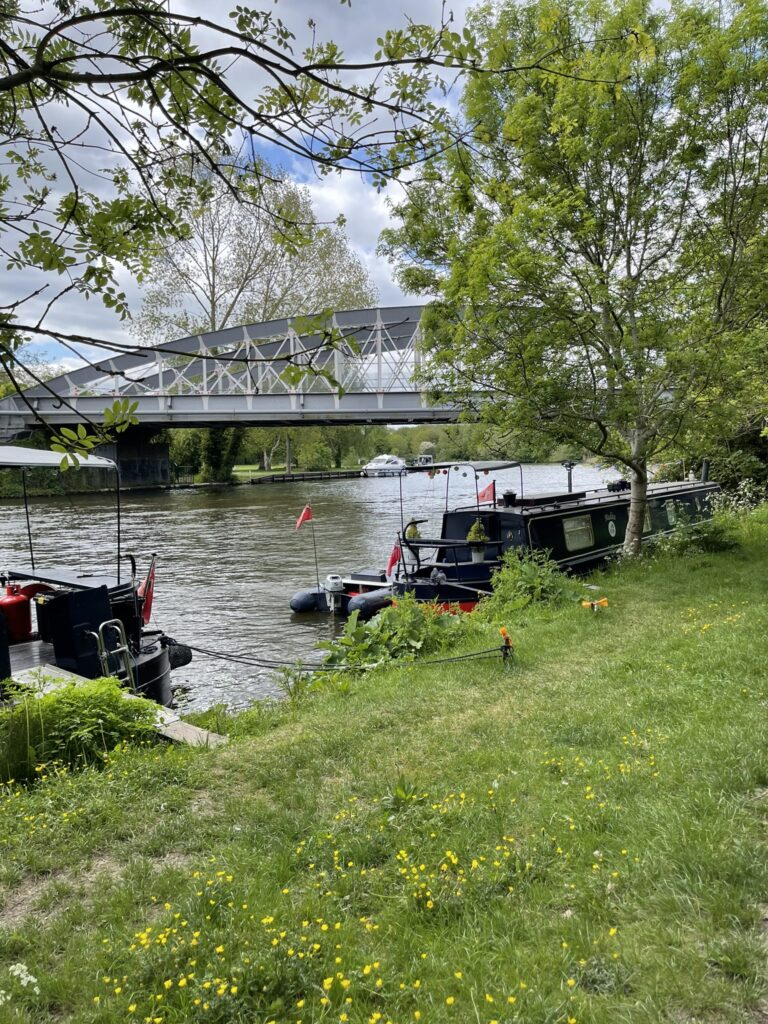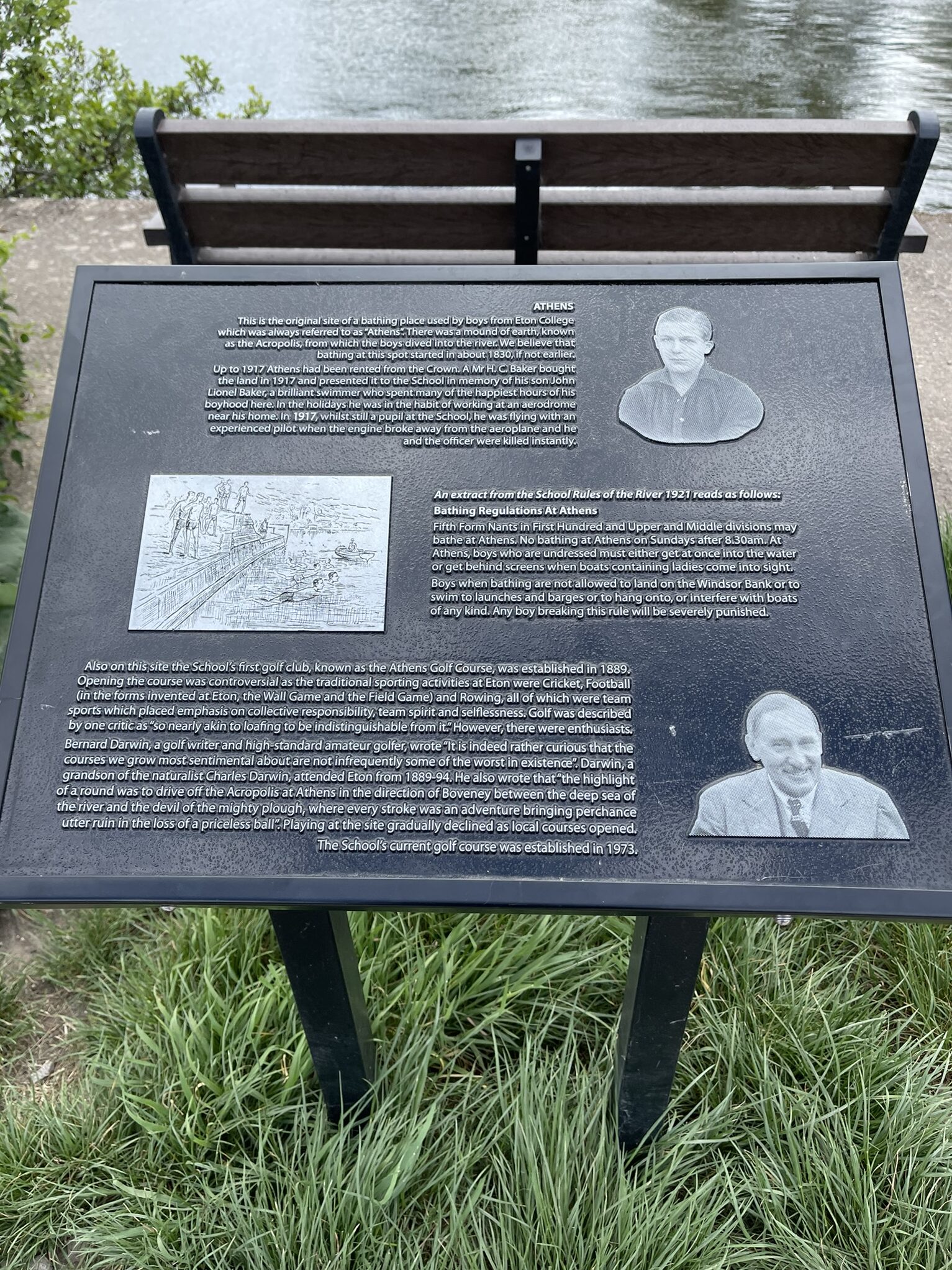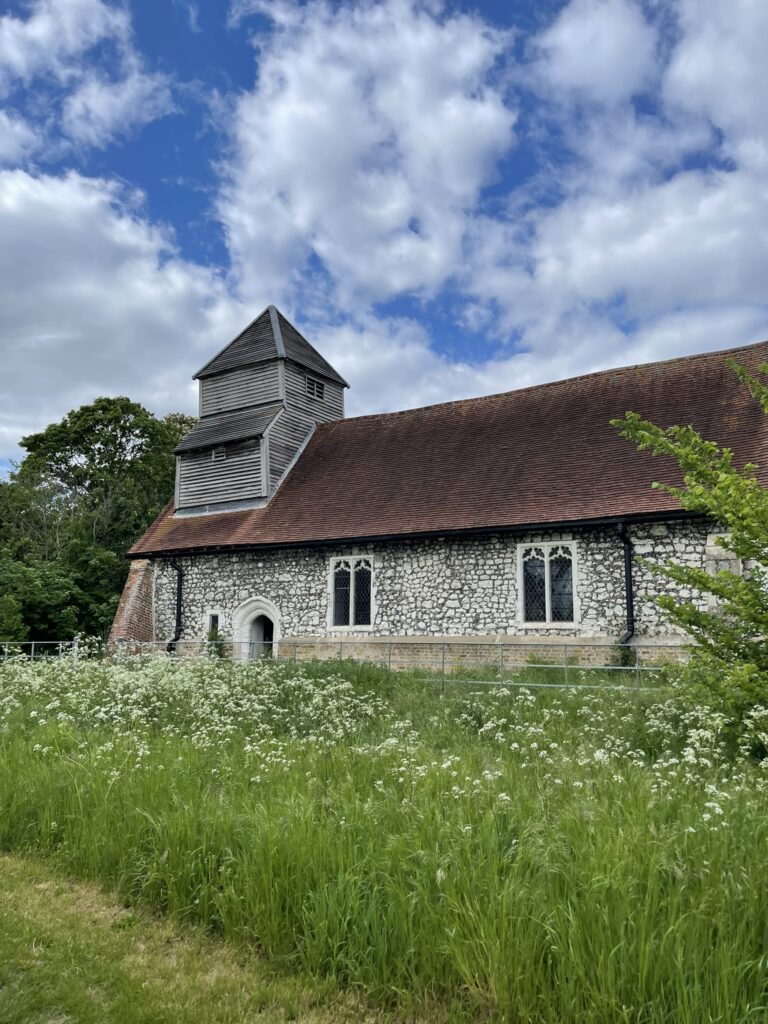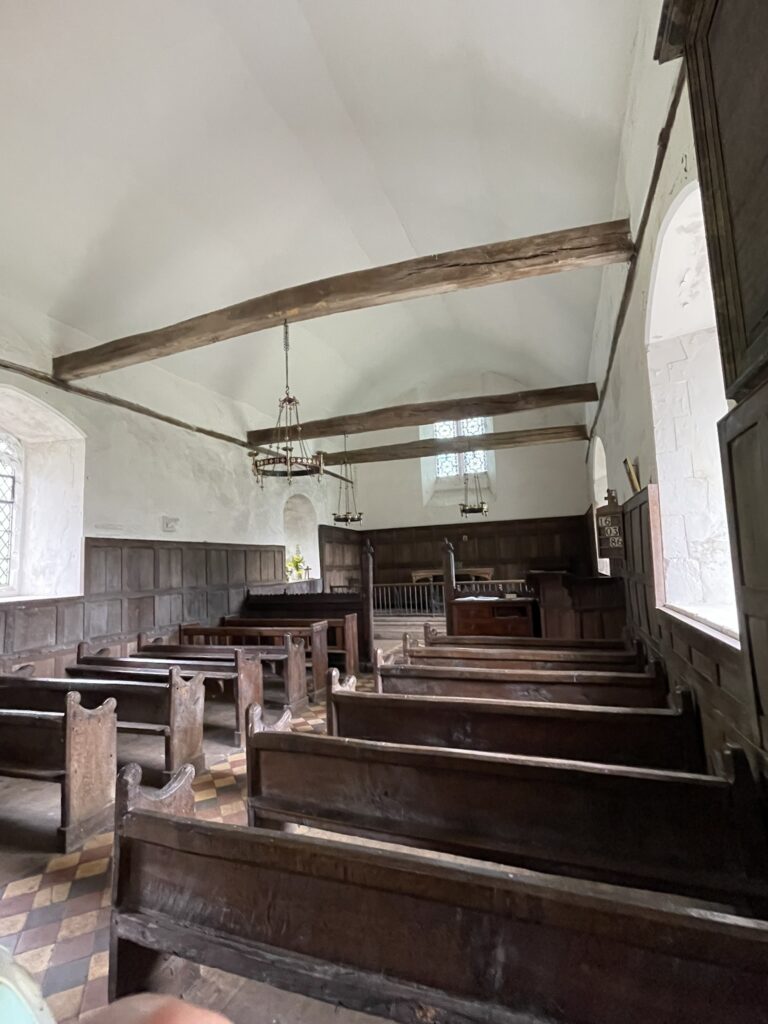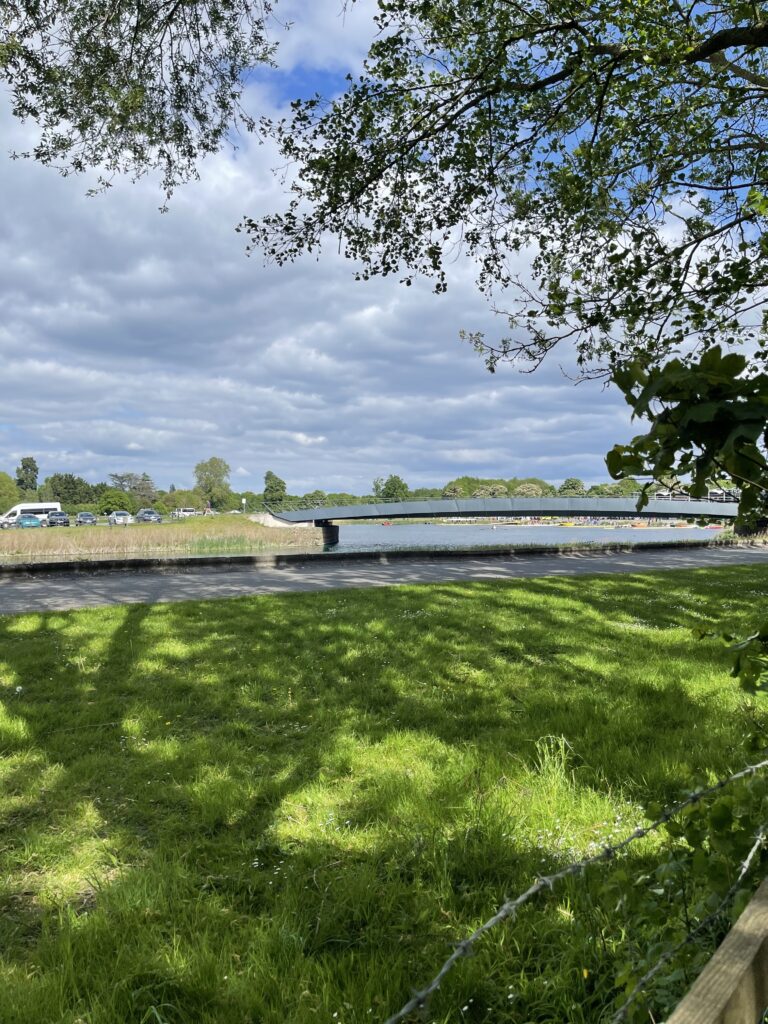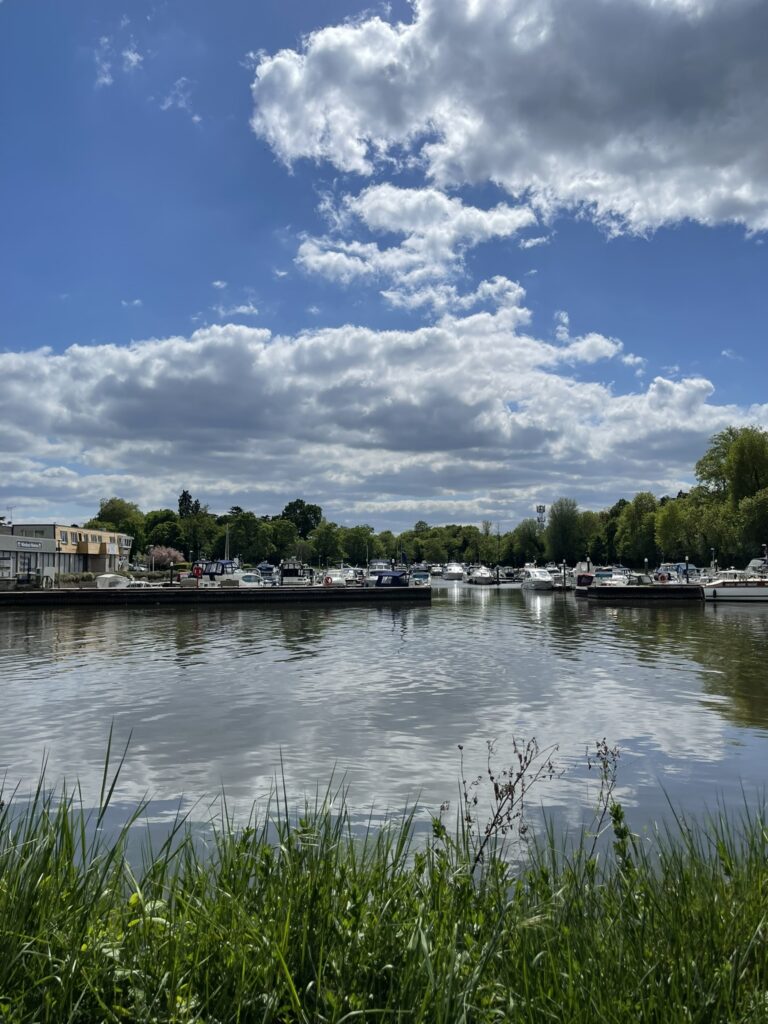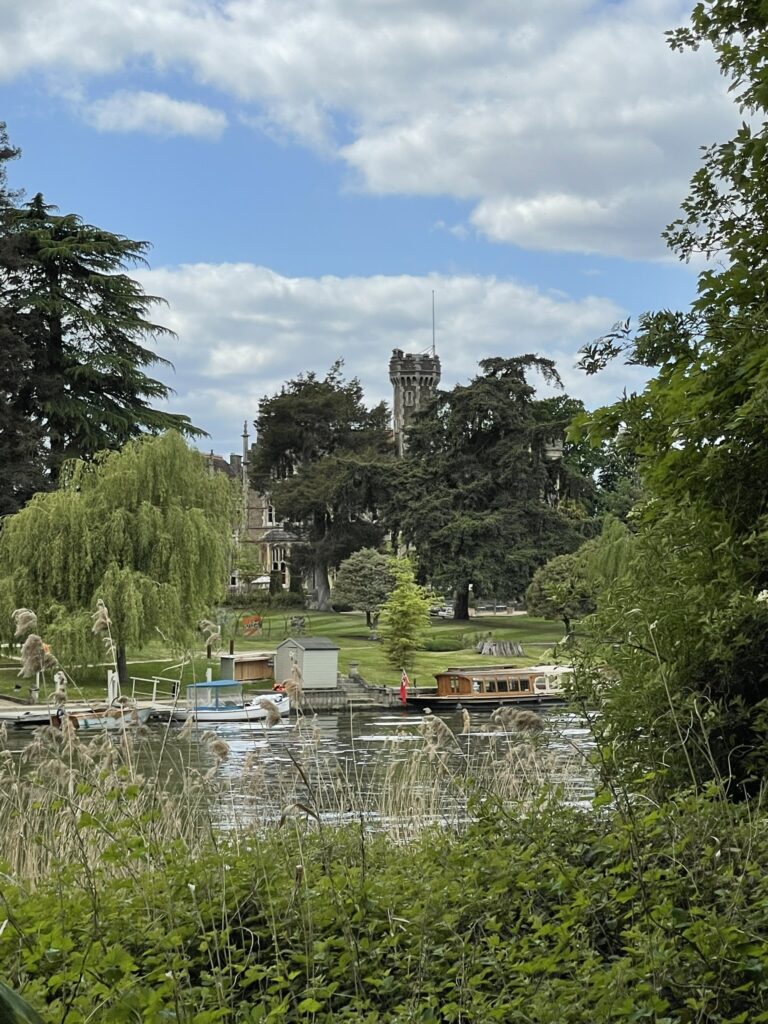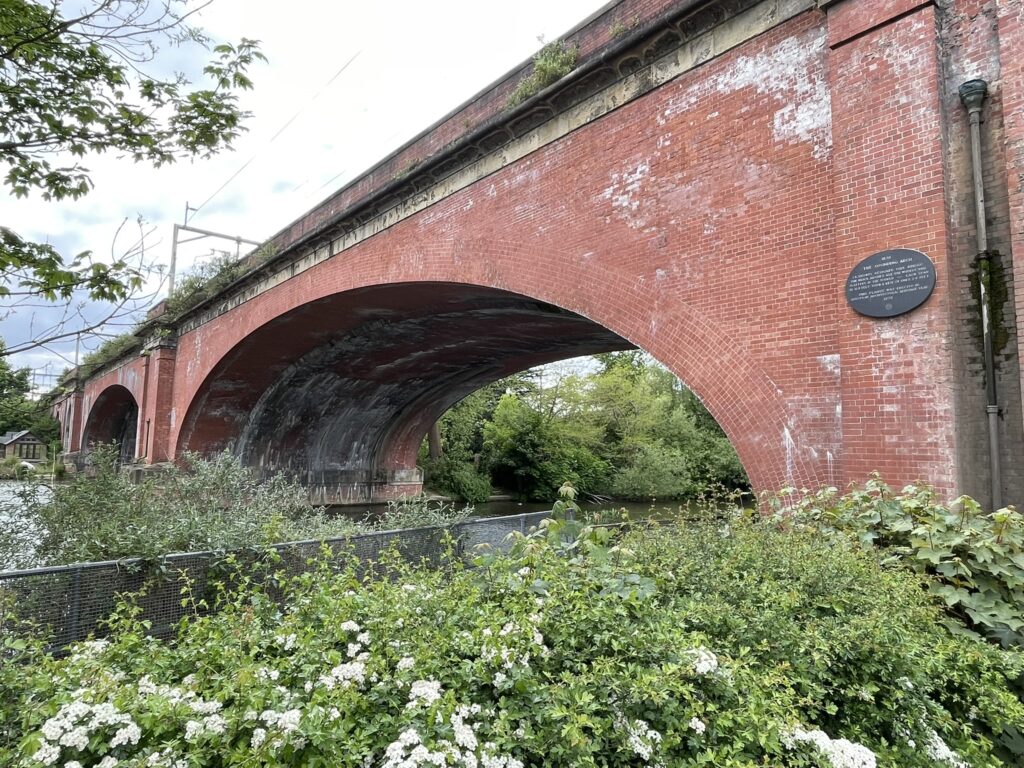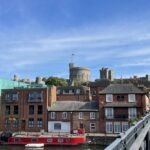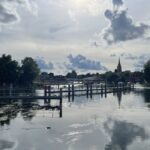Total Distance: 6.6 miles
Time: 3 hours 22 minutes
Points of Interest:
Windsor Castle
Windsor Bridge
Brocas Meadow
Windsor Railway bridge
Windsor Winding Post
‘Athens’
Boveney Lock
St Mary Magdalene Church
Dorney Lake
Windsor Marina
Oakley Court
Monkey Island
Bray Lock
Maidenhead Railway Bridge
Maidenhead Bridge
We arrived at Windsor just before 1pm, the town centre was heaving with people, so we didn’t hang around for long, preferring the peacefulness and tranquillity of the countryside. We did however walk up to the castle, just to take a pic and to tick it off the list. I’ve been to Windsor many times before, so I didn’t want us to waste our energy fighting the busy crowds. We had 7 miles ahead of us!
Windsor is famous for its castle, the largest and oldest inhabited castle globally. Built in the 11th century, it has been occupied by every monarch since Henry I, making it the longest-occupied palace in Europe. While Windsor is a beautiful town, it can be very crowded. If you visit the area, I highly recommend seeing the castle. For a less crowded experience, consider visiting Eton on the opposite bank of the river, home to Eton College, which boasts twenty former prime ministers among its alumni.
After our quick sprint to the castle, we headed to our starting point for today – Windsor bridge. The bridge is a grade II listed structure and consists of three arches of iron and granite. While this bridge officially opened in 1824, a crossing has existed at this location since approximately the 12th century.
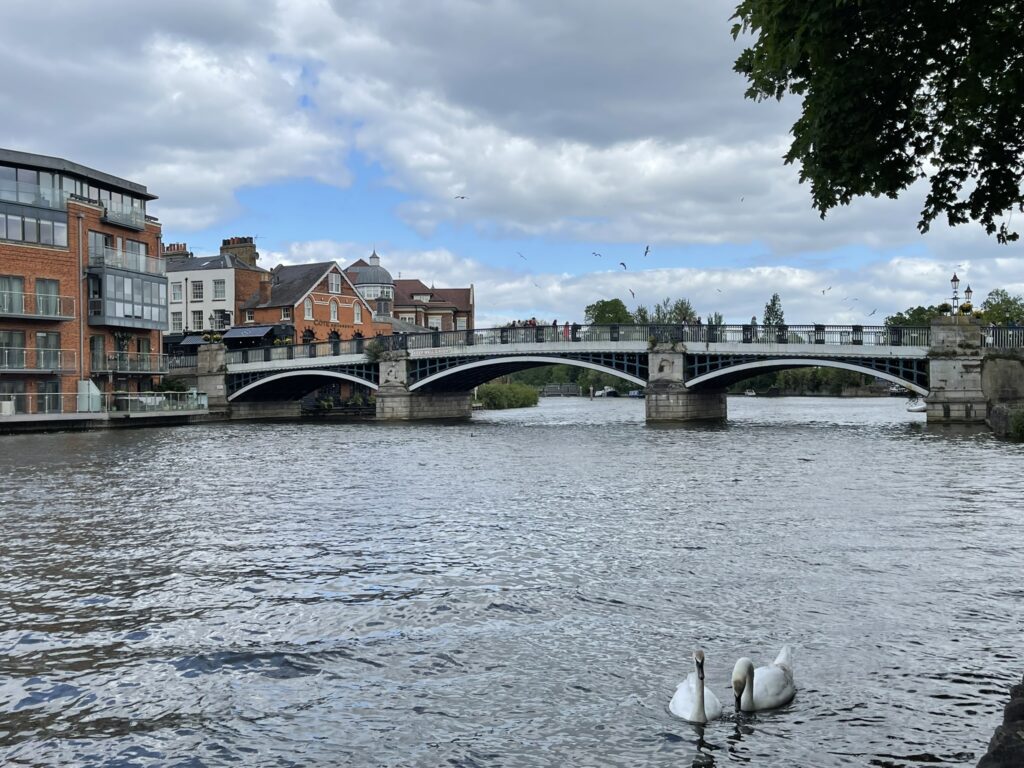
The path westward across Windsor bridge leads through Brocus meadow, offering excellent castle views and picnic opportunities. The route continues under the Windsor railway bridge, a Grade II listed structure built in the 1840s and designed by Isambard Kingdom Brunel. This bridge is thought to be the oldest wrought iron railway bridge still in regular use worldwide.
Along this section of the river path lies the Windsor winding post, though I unfortunately overlooked it, concealed by vegetation on the riverbank. This post was crucial when horse-drawn barges were common here. Due to a very sharp bend, there was a danger of the barge going straight even after the horse turned, potentially pulling the horse into the river. The winding post served to catch the towrope and guide the barge’s bow around the bend. After the turn, the rope would be briefly detached from the horse’s harness, manually looped around the post, and then reattached, allowing both horse and barge to proceed.
Another point of interest that I did see was a spot called ‘Athens’. This was a designated bathing place for boys at Eton College. The boys were reminded to remain in the water or hide behind screens when ladies were on boats. A plaque now commemorates the spot and is part of the historical narrative of Eton College’s connection to the river.
A little further along, we had our first rest stop at Boveney Lock. The lock was first built in 1838. Originally made of wood, it was replaced with masonry in 1898. The lock was made hydraulic in 1964/5.
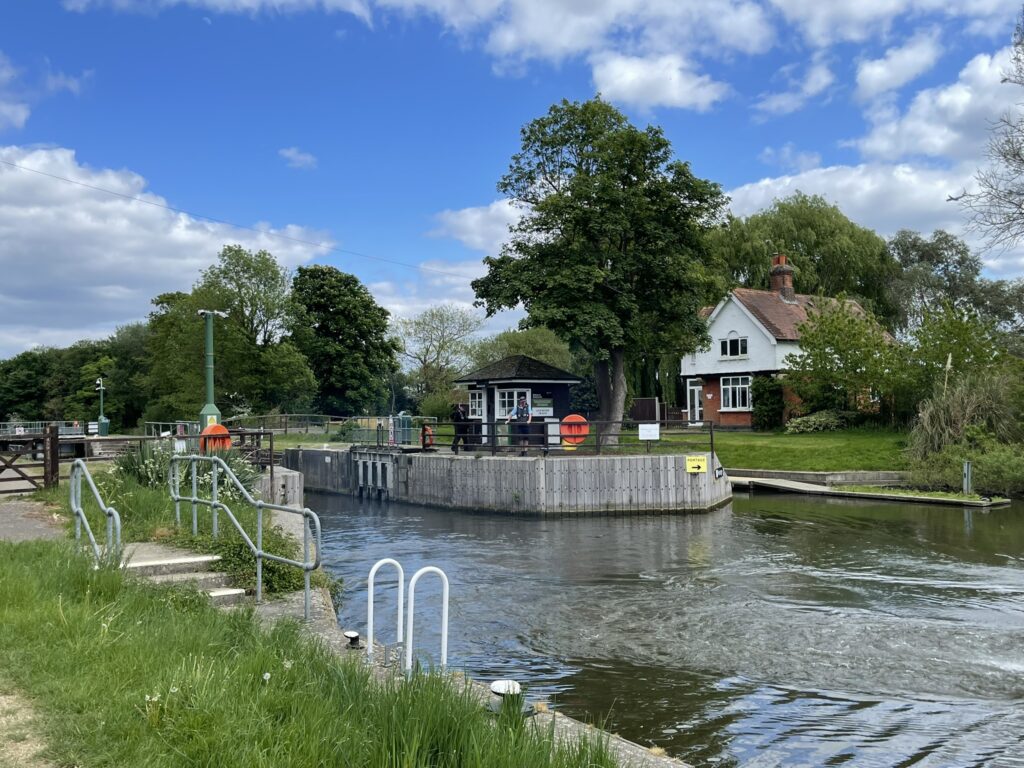
Having rested, we continued along the path, and we eventually came across St Mary Magdalene Church. The church was founded in the 12th century and was built to serve the bargemen on the Thames. The tower and windows were added in the 15th century. It is constructed of flint and chalk rubble, and some of the pews inside are from the 15th century.
The church was declared redundant in 1975, and it was planned to be demolished or converted into residential accommodation. However, following a local campaign, it passed into the care of the charity the Friends of Friendless Churches in 1983. The church is still consecrated and it’s occasionally used for services.
Aside from the distant cheers from a competition at Dorney Lake, it was quite a tranquil spot. The lake is a purpose built rowing venue. Constructed in 2006 the lake hosted rowing and canoe sprint events during the 2012 London Olympics.
The path runs alongside the lake, however, you don’t really get much of a view of it from the path.
It occurred to me that I hadn’t eaten anything since leaving home, and there really hasn’t been anywhere to stop and have something to eat. I guess, as I move into the country more, there is to be less opportunity to stop and have a bite to eat. Next time, I must remember to bring a packed lunch! I did however have an apple in my bag and some treats for Cher, so we took another rest break halfway along the lake.
We sat opposite Oakley Court, a Victorian gothic country house which is now a luxury hotel, but is probably more recognised as Dr. Frank N. Furter’s castle in The Rocky Horror Picture Show. The building is grade II listed and was built in 1859. It is believed that the Court was used during the last war as the English Headquarters for the French Resistance and President De Gaulle is reputed to have stayed in one of the Mansion bedrooms.
Having rested, we continued along the path. We passed Monkey island, which was purchased by the Duke of Marlborough in 1738. The Duke commissioned two buildings from Palladian architect Robert Morris: a two-storey Fishing Temple and an octagonal Fishing Pavilion for sleeping and entertaining. He died in 1758, and in 1840 the Pavilion became a riverside inn. Visitors included monarchs and showbiz royalty such as famous singers Clara Butt and Dame Nellie Melba. The middle of the twentieth century saw extensive additions added to the pavilion and refurbishment of the island. After further renovations in 2015, it is now a luxury hotel. Unfortunately, you can’t see much of the buildings from the path, so sorry, no picture!
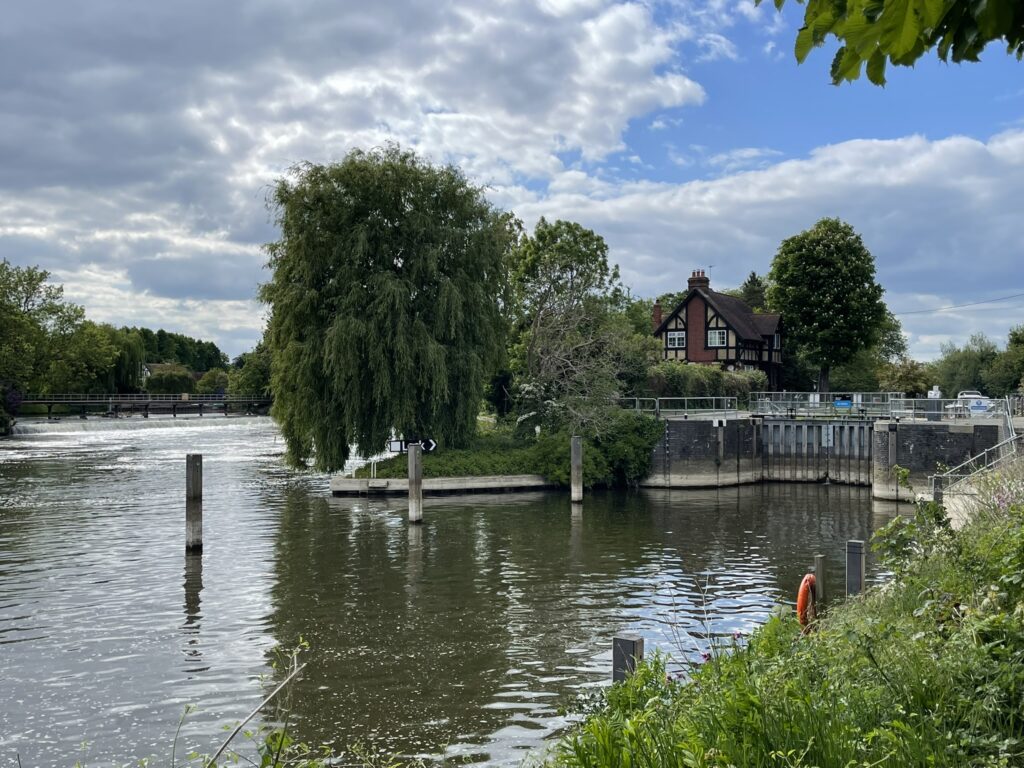
As we passed under the M4 motorway, we approached Bray lock. The lock was first built in 1845 and rebuilt in 1885. Prior to the rebuilding, Charles Dickens had described Bray Lock as a “rotten and dangerous structure”.
Our walk for the day was almost complete as we approached Maidenhead railway bridge, also known as the sounding arch, due to its spectacular echo. The bridge is another designed by Brunel, and the brick arches are the longest and flattest in the world. Each span is 128 feet (39.01 m) with a rise of only 24 feet (7.32 m). It was completed in 1838, but not brought into use until 1 July 1839.
And so we came to Maidenhead bridge, our final stop on our walk today. There has been a bridge here since the 13th century. The current bridge was opened in 1777 and is grade I listed. We sat by the bridge for a short while. Although it was getting a bit chilly now, it had been a perfect day for a walk, not too hot and it remained dry. I was, however, starving, and with only dog treats in my bag I went in search of a nice pub for Sunday lunch. Unfortunately I couldn’t find anywhere so had to settle for a sandwich and a packet of crisps at the station! Better luck next time!
